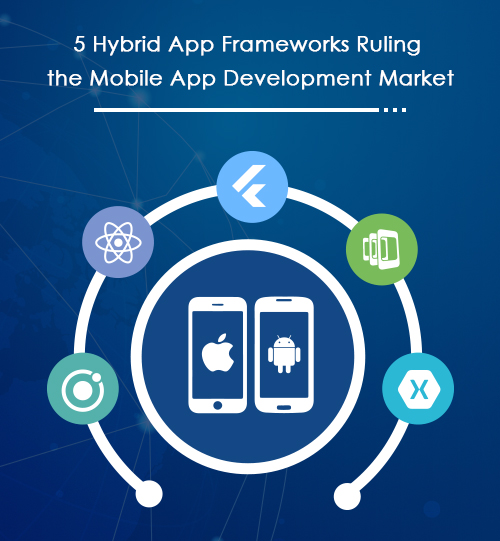Internet of Things (IoT) and machine-to-machine (M2M) technologies use messaging and connectivity protocols to transfer information remotely. The key features of these protocols are:
- Low Power Consumption
- Small Code Footprint
- Low Latency
- Use of Pub/Sub Pattern
- Low Bandwidth Consumption
MQTT protocol suffices all these requirements and has renowned cloud platforms – Microsoft Azure, AWS, and Google Cloud – as a driving force behind it. Thus, it complements the necessities of IoT and has become a sought-after protocol for this technology.
In this article, we will shed light on what MQTT is, how it works, and how it is beneficial for IoT.
What is MQTT?
MQTT (Message Queuing Telemetry Transport) is an open OASIS and ISO standard (ISO/IEC PRF 20922)[3] lightweight and flexible protocol that was launched by IBM. The lightweight feature allows it to be easily implemented into power-constrained IoT devices, while the flexibility provides support to varied application scenarios for IoT devices and services.
Furthermore, MQTT uses the Public/Subscribe pattern to exchange messages between devices. This protocol basically operates over TCP/IP; however, any network protocol that provides lossless, ordered, bi-directional connections can support MQTT. Generally, it is developed for connections with remote locations where the network bandwidth is limited, and a small code footprint is required.
How Does MQTT Work?
MQTT Architecture
Similar to other IoT protocols, MQTT is based on clients and a server. The connected devices in MQTT are called “Clients”, which communicate with a server known as “Broker”. To clarify, brokers handle data transmission between clients.
When a client wants to send information to the broker, it will be published to a particular topic. In this case, the client will be referred to as a “Publisher”. On the other hand, when a client that has subscribed to that topic wants to receive information from the broker, then the client will be referred to as a “Subscriber”. Additionally, the client that has subscribed to a particular topic will receive all messages published on the topic henceforth.
The publishers and subscribers do not typically know each other. They are only aware of the broker that serves as an intermediary. Also, any client can be a publisher, subscriber, or both. This setup is recognized as the “Pub/Sub Model”.

MQTT Messages QoS Level
Besides messages, the publisher also sends QoS (Quality of Service) level, which defines the guarantee of the message delivery. There are mainly three QoS levels, such as:
At most once: The broker will only receive the published message at most once. This level should not be used for sending important messages since there are fewer possibilities that the subscribers will receive it.
At least once: In this level, the publisher continuously sends the message until it receives an acknowledgment from the broker. In other words, it is more important that the message is received by the subscribers than to ensure that it is received only once. This is the most commonly used QoS level.
Exactly once: The publisher and broker work in tandem to ensure that the subscriber receives messages exactly once. This level needs some additional overhead in the form of a four-part handshake, which provides a secure authentication strategy for information delivered through network architectures. It is the safest and most guaranteed QoS level but also the slowest one. Thus, it is used only when necessary.
How Does MQTT Work in IoT?
As said earlier, MQTT is one of the most widely used protocols in IoT. Let’s understand how it works in the Internet of Things with an example.
Assume you have multiple weather sensors ( a humidity sensor and a temperature sensor) and two mobile phones. You want to send data about the humidity level to one phone and the temperature level to another.
Using MQTT, this task can easily be managed. Firstly, you need to set up an MQTT broker service. Then, you can connect two sensors on the broker as clients and set them up to send data on topics – “Humid” and “Temp”.
After that, you can also integrate the mobile phones with the broker and subscribe the first mobile to “Temp” and the second one to “Humid”. Consequently, two connected devices will receive messages about the humidity and the temperature whenever the sensors publish the required information to the broker.
Over time, MQTT is becoming the most preferred protocol among businesses and IoT app developers for exchanging data among IoT devices.
Key Benefits of MQTT
Lightweight Code Footprint: IoT devices require only a few lines of code to integrate and work with MQTT protocol.
Minimized Data Packets: MQTT is very energy-efficient and operates significantly if a device is battery-powered or has little CPU power.
Speed: MQTT runs in real-time, with no delays outside of Quality of Service (QoS).
Seamless Implementation: MQTT has in-built libraries in programming languages like Python and Elixir. So, it is easy to implement.
Last Will and Testament: If a client disconnects unexpectedly, you can set message instructions that will be sent to all subscribers so as to remedy the situation.
Retained Messages: Each topic can have a retained message that every client will automatically receive on subscribing.
Common Alternatives to MQTT
XMPP (Extensible Messaging and Presence Protocol) is a communication protocol based on XML language for storing and exchanging data. It is often used to support instant messaging services.
A few differences between XMPP and MQTT are:
- The XMPP code footprint is slightly heavier than MQTT, and you need an XML parser to encode as well as decode information.
- XMPP doesn’t support pub/sub model by default, but it can be done with an extension.
- XMPP takes more bandwidth than MQTT.
HTTP (Hypertext Transfer Protocol) is the foundation of the World Wide Web. However, this protocol is stateless and requires more overhead per transmission as compared to MQTT. Additionally, it has a lower throughput than MQTT, which means that you cannot send multiple messages simultaneously.
Conclusion
MQTT plays a significant role in making IoT products more “low-lift” while achieving desired connections among devices, servers as well as apps. Devices that use MQTT protocol sync easier with existing systems.
If you are devising for a major IoT project, then MQTT would be the best choice. You can also partner with experienced IoT app developers who know the ins and outs of this protocol.













